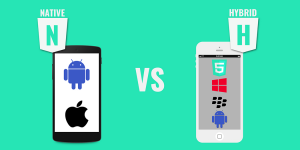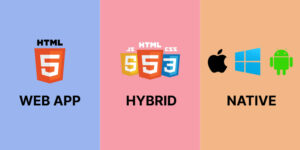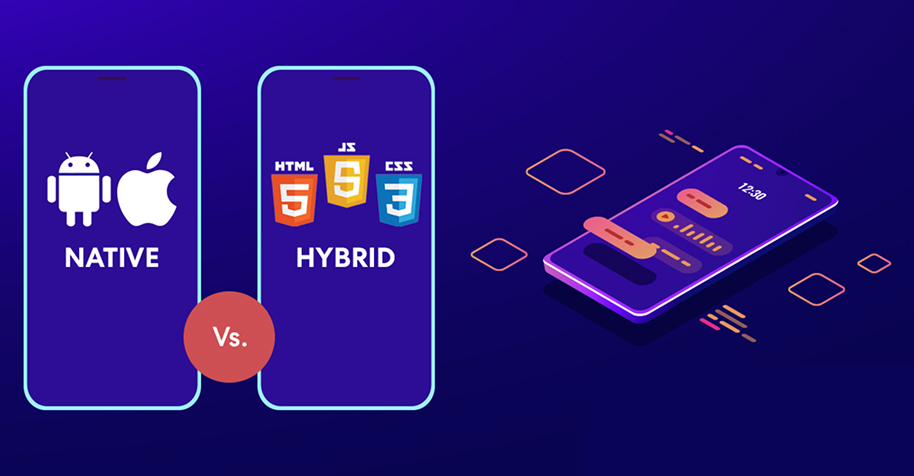
In today’s digital world, choosing between native and hybrid apps can greatly impact your business success. Native apps are specifically designed for platforms like iOS or Android, providing excellent performance and smooth integration with the device. On the other hand, hybrid apps use web technologies wrapped in native containers, offering a more affordable solution for deploying on multiple platforms.
Your decision between these two options affects:
- Development costs and timelines
- User experience quality
- App performance and features
- Market reach and scalability
- Long-term maintenance needs
This guide will help you understand the main differences between native and hybrid apps so you can make the best choice for your business. You’ll learn about the advantages and disadvantages of each approach, explore the growth of cross-platform solutions, and discover what factors to consider when deciding on your app development strategy.
By the end of this article, you’ll have a clear understanding of which type of app aligns best with your business goals, budget limitations, and target audience requirements.
Understanding Native Apps3
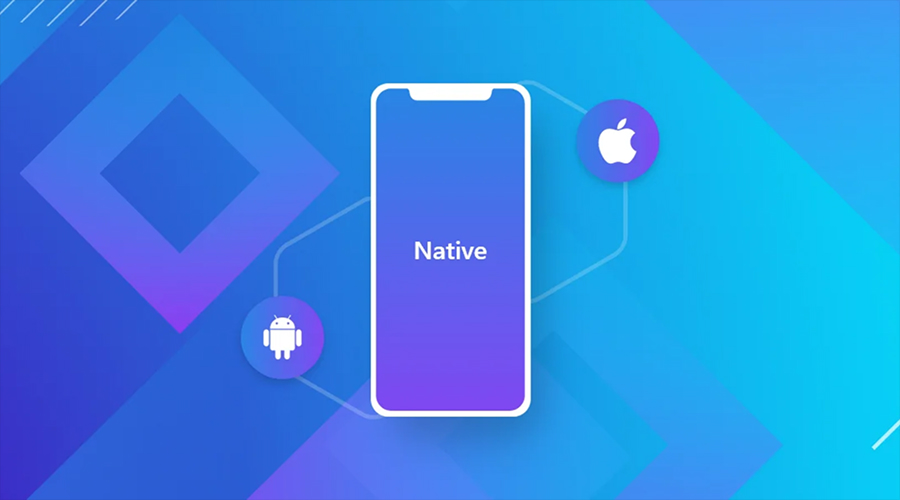
Native apps are the gold standard in mobile application development. These applications are built specifically for individual operating systems using platform-specific programming languages and development tools.
➝ iOS Native Development
The following tools and languages are used for iOS native development:
- Swift – Apple’s modern programming language
- Objective-C – Traditional iOS development language
- Xcode – Apple’s integrated development environment
- iOS SDK – Native software development kit
➝ Android Native Development
The following tools and languages are used for Android native development:
- Kotlin – Google’s preferred programming language
- Java – Traditional Android development language
- Android Studio – Google’s official IDE
- Android SDK – Complete development toolkit
Native apps access device features directly through the operating system’s APIs, creating seamless integration with:
1. Camera functionality
2. GPS and location services
3. Device sensors
4. Push notifications
5. Biometric authentication
The direct communication between native apps and device hardware results in:
1. Lightning-fast performance
2. Responsive user interfaces
3. Smooth animations
4. Efficient memory usage
5. Enhanced security features
Native development enables creators to implement platform-specific design patterns:
- Material Design for Android
- Human Interface Guidelines for iOS
- Native UI components
- Platform-specific gestures
- Custom animations
These platform-specific implementations create intuitive experiences for users, as the apps behave exactly as expected within their respective ecosystems. Users benefit from consistent navigation patterns, familiar interface elements, and optimized performance that matches their device’s capabilities.
The specialized nature of native development allows apps to leverage the latest platform features immediately after release, ensuring your application stays current with technological advancements and security updates.
Benefits and Challenges of Native App Development for Businesses
Native app development offers distinct advantages that make it an attractive choice for specific business needs:
➝ Key Benefits:
- Enhanced Security Features: Native apps provide robust security protocols and encryption methods, making them ideal for financial services and healthcare applications
- Reliable Offline Access: Users can access core functionalities without internet connectivity – perfect for productivity tools and business applications
- Optimal Gaming Performance: High frame rates and smooth animations make native apps the go-to choice for gaming companies
- Complete Device Integration: Direct access to device features like GPS, camera, and biometric authentication creates seamless user experiences
➝ Business Challenges:
The development process comes with specific hurdles:
- Cost ImplicationsSeparate development teams for iOS and Android
- Higher maintenance expenses across platforms
- Increased testing requirements
- Time-Intensive DevelopmentMultiple codebases require parallel development
- Platform-specific bug fixes and updates
- Longer app store approval processes
- Technical ComplexityNeed for specialized developers per platform
- Complex debugging across different devices
- Regular updates to maintain compatibility with OS changes
Real-world examples show native apps excel in sectors requiring peak performance. Banking apps like Chase and Wells Fargo use native development to ensure secure transactions, while games like Pokémon GO leverage native capabilities for augmented reality features.
Exploring Hybrid Apps

Hybrid apps are a combination of web technologies and native capabilities. They use HTML5, CSS3, and JavaScript inside a native container, allowing them to work on different platforms.
1. How Hybrid Apps Work
Hybrid apps work by running the main application inside a WebView, which is a special browser window that shows web content within the native container. This setup gives developers the ability to:
- Write code once using familiar web technologies
- Deploy across iOS, Android, and other platforms
- Access device features through specialized plugins
- Update content without app store submissions
2. Benefits of Hybrid Apps
The single codebase advantage of hybrid apps transforms the development process. Instead of maintaining separate codebases for iOS and Android, developers work with one set of web technologies. Popular frameworks like Ionic, PhoneGap, and Framework7 provide pre-built components and tools to streamline development.
3. Architecture of Hybrid Apps
The architecture of hybrid apps includes:
- Web components (HTML5, CSS3, JavaScript)
- Native container wrapper
- Bridge interface for device access
- Platform-specific adaptations
This approach enables businesses to reach users across multiple platforms while maintaining cost-effective development cycles. The web-based nature of hybrid apps allows rapid iterations and updates, making them particularly suitable for content-driven applications and enterprise solutions.
Advantages and Limitations of Hybrid Apps for Businesses
Hybrid apps offer significant business advantages through cost-effective development strategies. Building a single codebase allows companies to reduce development costs by up to 50% compared to native app development. Your business can maintain one team of web developers rather than separate iOS and Android specialists.
➝ Key Business Benefits:
- Rapid deployment across multiple platforms
- Lower maintenance costs with unified updates
- Reduced development team size
- Faster time-to-market cycles
- Simplified bug fixes and feature rollouts
The cost savings extend beyond initial development. When you need to update your app, changes apply simultaneously across all platforms, cutting maintenance time and resources.
➝ Performance Limitations:
- Slower processing speed than native apps
- Limited access to device-specific features
- Potential rendering issues across different devices
- Increased battery consumption
- Dependency on third-party plugins
These performance trade-offs become more noticeable in apps requiring heavy computational power or complex graphics. Gaming apps, video editors, or augmented reality applications typically perform better as native apps.
User interface challenges can impact your app’s success. Hybrid apps may struggle to maintain consistent design elements across different operating systems. The app might feel sluggish during complex animations or when processing large data sets. Your users could experience delayed responses during interactions, particularly in areas requiring intensive device feature access.
Moreover, managing artifact dependencies can be a challenge in hybrid app development. This is due to the reliance on third-party plugins which may not always integrate seamlessly with your app’s architecture.
The Rise of Cross-Platform Native Apps
Cross-platform native frameworks have transformed mobile app development by combining the best features of native and hybrid approaches. These groundbreaking solutions enable developers to write code once and deploy it on multiple platforms while still achieving performance levels close to native apps.
➝ Popular Cross-Platform Frameworks:
- React Native – Created by Facebook, enables building native apps using JavaScript and React
- Xamarin – Microsoft’s framework supporting C# development for iOS and Android
- Flutter – Google’s UI toolkit for crafting natively compiled applications
These frameworks provide direct access to platform-specific features through native modules, eliminating the need for plugins common in hybrid development. You can build sophisticated user interfaces that adapt to each platform’s design guidelines while sharing up to 80% of the codebase.
The rise of cross-platform development has sparked interest from major tech companies and startups alike. Companies like Instagram, Walmart, and Microsoft Teams have successfully implemented React Native, demonstrating the framework’s capability to handle complex, large-scale applications.
Benefits and Considerations When Choosing Cross-Platform Frameworks for Your Business App Strategy
Cross-platform frameworks offer substantial benefits for businesses seeking efficient app development strategies. The ability to maintain a single codebase for multiple platforms creates significant cost savings and accelerates development cycles. Your development team can write code once and deploy it across iOS, Android, and other platforms, reducing the resources needed for parallel development efforts.
➝ Key Benefits:
- 60-80% code reuse across platforms
- Faster time-to-market with simultaneous platform releases
- Reduced testing and maintenance overhead
- Native-like performance through direct API access
- Consistent user experience across devices
➝ Strategic Considerations:
- Limited access to platform-specific features
- Dependency on framework updates and third-party tools
- Potential performance impact with complex animations
- Smaller talent pool compared to native development
The learning curve for cross-platform development varies by framework. React Native leverages JavaScript knowledge, making it accessible for web developers. Flutter requires learning Dart but offers extensive documentation and development tools.
➝ Resource Availability:
- React Native: Large community, extensive third-party libraries
- Flutter: Growing ecosystem, robust official documentation
- Xamarin: Enterprise-focused, smaller community support
Performance optimization requires careful consideration of framework-specific best practices. Your app’s complexity and feature requirements will influence the effectiveness of cross-platform solutions. High-performance applications might need native modules to complement cross-platform code for specific functionalities.
Key Factors to Consider When Choosing Between Native vs Hybrid vs Cross-Platform Apps
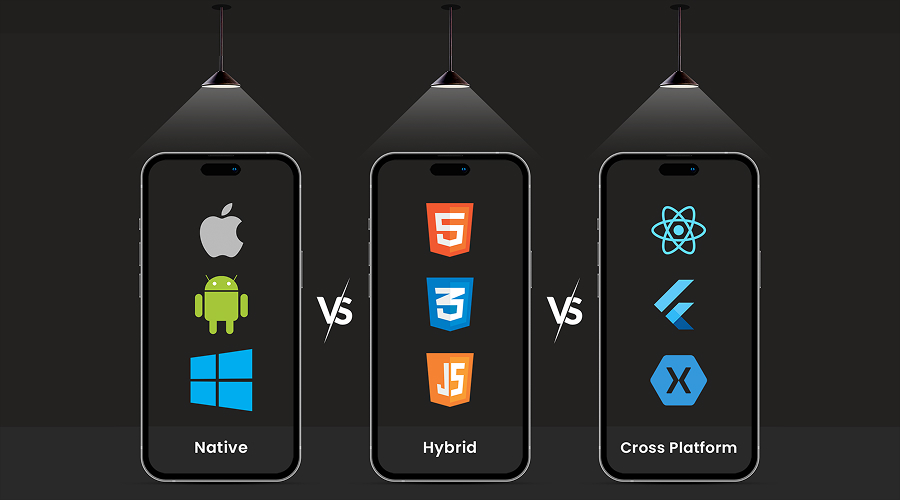
Your app development decision depends on several critical factors that shape your project’s success. Let’s take a look at the key elements that influence this choice:
1. Budget Allocation
- Native apps require separate development teams for each platform
- Hybrid solutions cut costs with single codebase development
- Cross-platform frameworks offer middle-ground budget efficiency
2. User Experience Requirements
- High-performance needs demand native development
- Basic functionality works well with hybrid solutions
- Complex animations and transitions perform better in native apps
3. Scalability Considerations
- Native apps handle large user bases with optimal performance
- Hybrid apps might struggle with extensive feature additions
- Cross-platform solutions balance scalability with maintenance
4. Target Audience Analysis
- iOS-dominant markets benefit from focused native development
- Mixed platform usage suggests a hybrid or cross-platform approach
- Regional device preferences impact platform selection
5. Time-to-Market Pressure
- Hybrid apps launch faster across platforms
- Native development extends timeline significantly
- Cross-platform solutions offer moderate development speed
6. Technical Requirements
- Device hardware access needs favor native development
- Simple data display suits hybrid solutions
- API integrations work across all approaches with varying complexity
These factors interact uniquely for each business case. A startup might prioritize quick market entry with hybrid development, while an established enterprise might invest in native apps for premium user experience.
Which App Type is Best for Your Business? Use Case Analysis
Different business needs demand different app development approaches. Let’s examine specific use cases to help you identify the best fit for your project:
1. Native Apps Excel In:
- Gaming apps require high-performance graphics and real-time interactions
- Financial applications with strict security requirements
- Apps needing advanced device features (camera, GPS, sensors)
- Resource-intensive applications like video editors or AR/VR tools
2. Hybrid Apps Shine For:
- Content-driven platforms like news or blog apps
- Internal business tools with basic functionality
- Simple e-commerce applications
- Apps prioritizing quick market entry across platforms
3. Cross-Platform Fits Best With:
- Social media applications balancing performance and reach
- Lifestyle apps with moderate device feature requirements
- Business productivity tools needing consistent cross-platform presence
- MVP launches testing market viability
Your gaming apps development strategy particularly benefits from native development when:
- Your game requires complex physics engines
- You need access to platform-specific gaming features
- Graphics performance is crucial to user experience
- You’re targeting serious gamers who expect optimal performance
A B2B service app might work well as a hybrid solution if:
- Your users primarily need information access
- The app performs simple data entry tasks
- Real-time performance isn’t critical
- You need to deploy quickly across multiple platforms
Conclusion
Choosing the right app development strategy is crucial for your business’s online success. Each approach – native, hybrid, and cross-platform – has its own benefits.
- Native apps offer the best performance and user experience, making them perfect for businesses that prioritize smooth functionality.
- Hybrid solutions provide a cost-effective way to reach multiple platforms, which is ideal for companies looking to enter the market quickly.
- Cross-platform frameworks find a middle ground between performance and efficient development.
Your decision should consider these important factors:
- Business Goals: Ensure your app type aligns with your strategic objectives
- User Experience: Understand your audience’s expectations for app performance
- Resource Allocation: Manage your budget and timeline constraints
- Technical Requirements: Assess your app’s specific functionality needs
- Long-term Scalability: Prepare for future growth and maintenance
Take the time to evaluate these factors in relation to your business needs. Making the right choice will enhance your online presence and provide a solid foundation for your app’s success in today’s competitive market.

